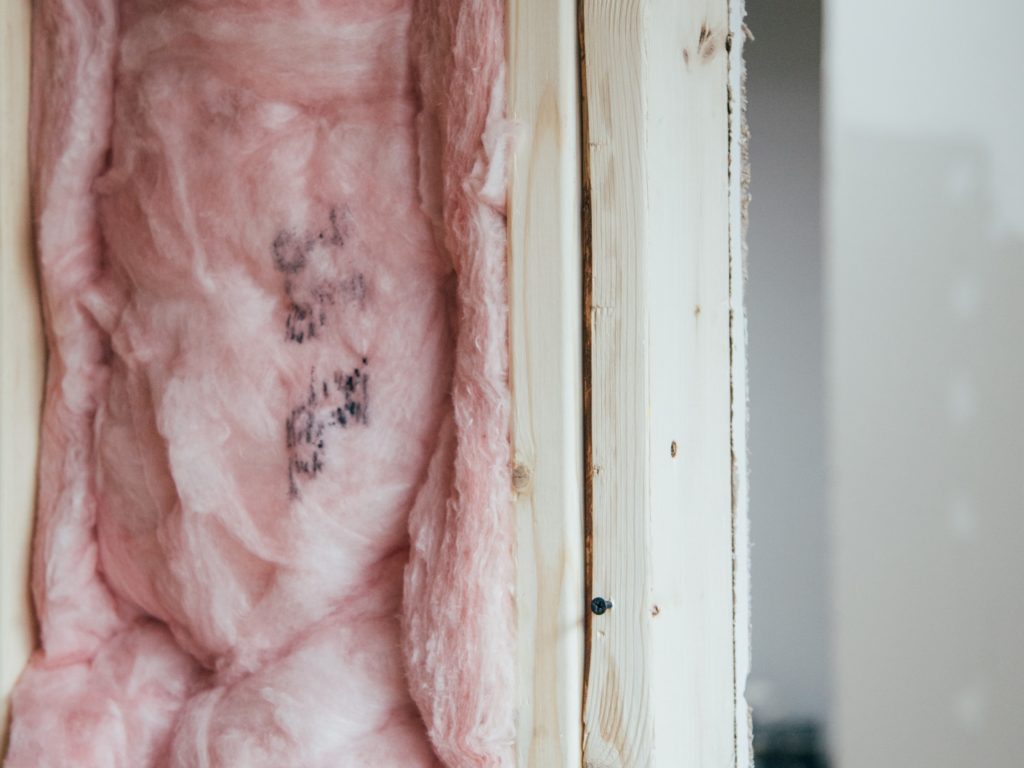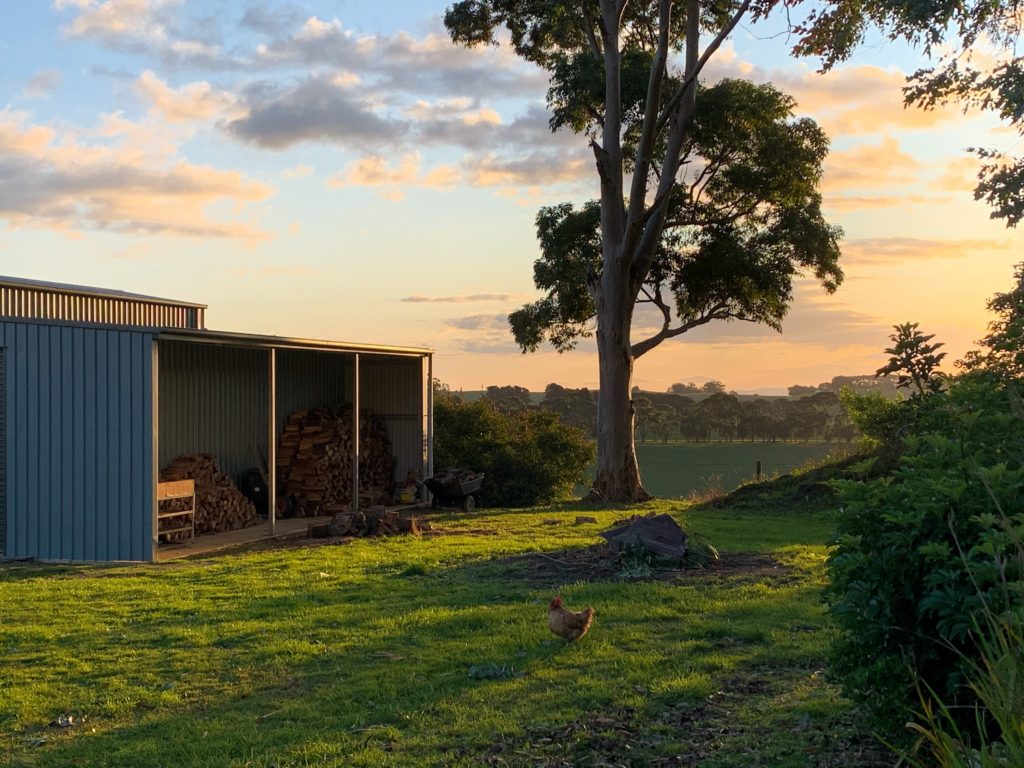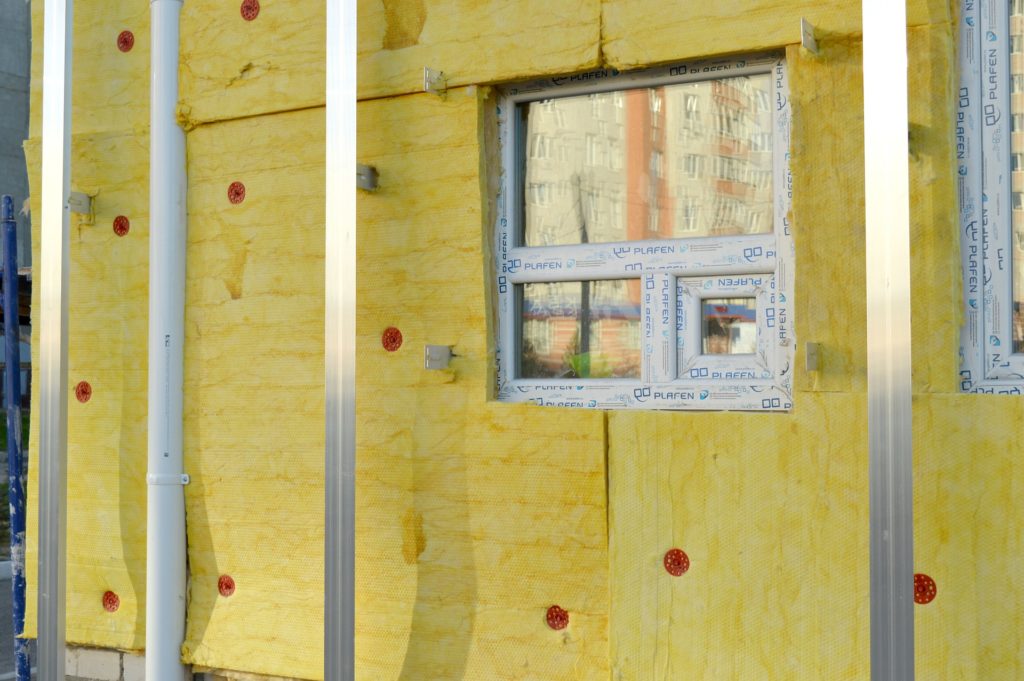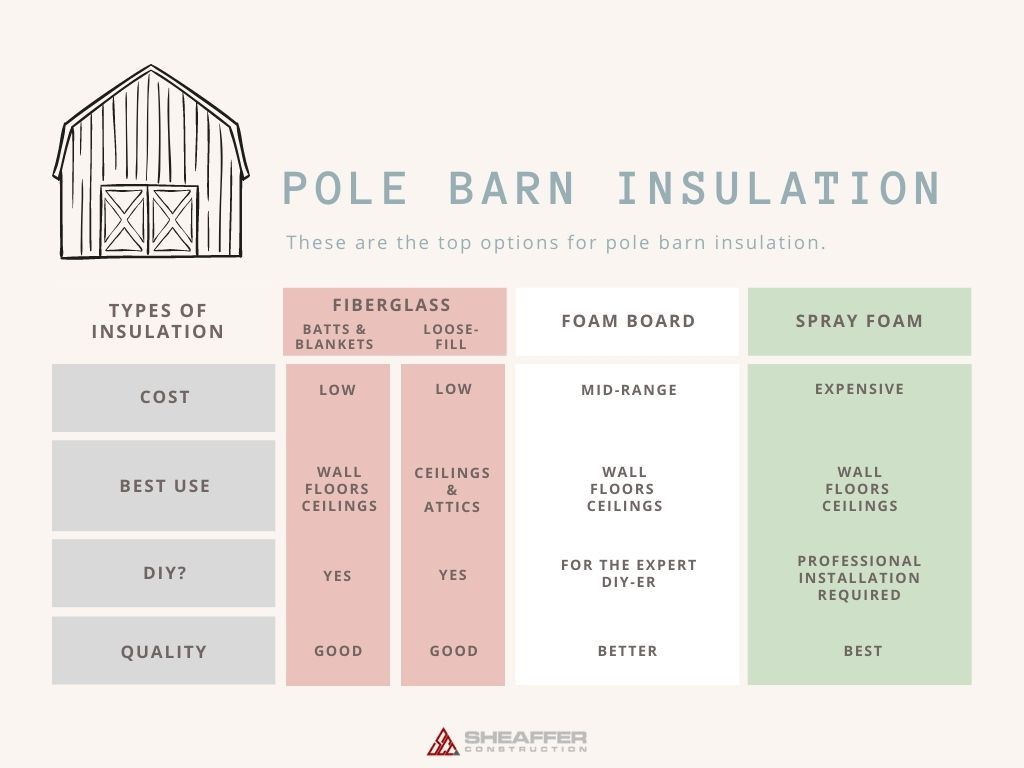
Insulation is important. Whether it’s that extra layer bears put on before they hibernate in the winter or that insulated thermal that keeps us extra toasty when the temperatures drop. However, pole barn insulation is for more than just heat control.
Many factors come into play when determining which type of insulation option is best for your pole barn. So, if you are trying to determine if pole barn insulation is worth spending your money on, we want to help.
What is worth spending is some time learning a bit about insulation before making your selection. There are several common insulation options and a hundred-fold of unique cases that will determine which insulation option is right for you and your pole barn building.
Read on for some insight into the insulation options available and some help to find the optimal solution for your pole barn.
First Off: Do You Really Need Insulation in Your Pole Barn Building?

Before truly diving in and wasting your time, you need to answer this simple question:
Do you really need insulation in your pole barn?
When the Answer is: No
The answer is often yes, but there are a few cases where it is just not worth the investment. For example:
- Open pole barn design (open barns for parking trailers or simple shed storage)
- Traditional barn (example: hay barn)
- Small animal pole barn structure (i.e., chicken coop)
If you are building a pole barn structure at its very basic, insulation probably isn’t for you. Of course, speak with our builders if you have any questions about whether you should invest in insulation or not.
When the Answer is: Yes
On the flip side, if you are building a pole barn that will be storing vehicles or equipment, a pole barn stable (for horses), or a pole barn office or home, we 100% advise using insulation.
Each case will have unique insulation needs. For example, horse stables may not need wall insulation, but they will likely benefit from roof insulation. Taking a close look at how you will use your building plays a huge role in the type of insulation you should invest in.
Sometimes clients underestimate their need for insulation. Think about how much time you will spend in your pole barn and determine what level of comfort you need. The thing is, insulation offers more than just temperature control. It has a huge impact on:
- Thermal control (of course)
- Airflow, quality, and ventilation
- Moisture and humidity (prevent mold, mildew, etc.)
- Energy efficiency (lower energy costs!)
- Acoustics
We know the benefit of a pole barn is that it has a lower price point. However, to truly get the most of your new structure, ensure ongoing low maintenance, and optimal energy efficiency, proper insulation is key.
If you’ve determined that insulation will be important for your pole barn building, keep reading to learn more about insulation and which options we recommend.
Benefits of Building Insulation and Energy Efficiency

A pole barn building is composed of a few essential parts: the roof, walls, foundation, doors, and windows.
Each part of your building offers a potential escape for air and can affect your space’s energy efficiency. This has a huge impact on heating, cooling, and even lighting.
Properly regulating these pathways and constructing a building that reduces air and energy flow will dramatically improve your building quality. Insulation plays a huge part in this as it reduces heat loss, air flow heat transfer (or the entry of cold air), and protects against radiation from the sun.
In essence, insulation serves to minimize excessive heating (in the summer) and, at the same time, minimize heat loss (in the winter).
Ideally, your building insulation will keep your building temperature regulated year-round. Which, in turn, should save you money by creating a space that requires less energy to heat or cool depending on the season.
When it comes to pole barns, insulation is the best investment to ensure your building stays in tip-top shape, and everything inside does too. Work with your builder to also make sure the design promotes energy efficiency!
The Most Common Pole Barn Insulation Options
Our team often works with 4 particular insulation options:
- Fiberglass batting
- Loose-fill fiberglass
- Foam board panels
- Spray foam insulation

Fiberglass Batting (for Walls, Ceilings, and Floors)
What it is: Fiberglass is a type of glass wool with a cotton candy-like appearance (and often pink too!) It is composed of flexible glass fibers and is one of the most common types of building insulation options. It can cause skin irritation.
Cost: Very Affordable
Effectiveness: Good
Maintenance: Will need to be eventually replaced every 25 years (like an air filter, fiberglass will collect dust, pollen, dirt, and other allergens) and even sooner if it gets wet.
Benefits: Affordable, no fire hazard, easy to find, a highly popular choice, perfect for DIY-ers
Downsides: Can release particulates in the air, might let in some moisture that can lead to mold and mildew, will eventually need to be replaced.
Loose-fill Fiberglass Insulation (for Attics)
What is it: Small fiberglass pieces, often white, soft, and fluffy. Composed of very fine fibers and may irritate skin.
Cost: Cheapest option
Effectiveness: Good for attics
Maintenance: Low, will need to do things to ensure air seal (ex: caulking), will need to be eventually replaced every 25 years (fiberglass will collect dust, pollen, dirt, and other allergens) even sooner if it gets wet.
Benefits: Affordable, no fire hazard, great for adding insulation to finished areas, an excellent solution for irregularly shaped areas and attic floors
Downside: Can release particulates in the air, might compress over time and lose effectiveness, will eventually need to be replaced
Foam Board Panels
What is it: There are different types and grades. Generally, all are a type of polystyrene foam that is available in different thicknesses and densities.
Cost: Mid-range
Effectiveness: Better
Maintenance: Very low, may need to repair boards that have cracked (can simply use canned foam)
Benefits: Moisture resistant, better R values, easier to seal joints to prevent airflow
Downside: Brittle, a bit more expensive and harder to find
Spray Foam Insulation
What is it: Spray foam is a polyurethane foam that expands as it is released, filling into small crevices and cracks. This means it creates the most solid, dependable barrier for building insulation and offers practically zero air infiltration.
Cost: Expensive
Effectiveness: Best
Maintenance: Virtually no maintenance
Benefits: Super high value, fills even the tightest of spaces, dries hard, no need to caulk, incredible temperature regulation
Downside: Expensive, requires professional installation
How to Decide Which Pole Barn Insulation Option is Best for You?
Often, which pole barn insulation you choose depends on what you are looking for, what your building will be used for, and what kind of investment you want to make.
Here’s our quick and fast recommendation depending on what your situation is:
- Affordability and Ease: Fiberglass
- Low Maintenance & High Investment: Spray Foam Insulation
- Middle of the Line: Foam Board
What About Those R-Values?
Insulation is rated by R-value which measures the material’s thermal resistance. That being said, we aren’t going to get into the nitty-gritty of R-values here and now. What you need to know, for now, is that an R-value tells you how well the insulation resists heat flow.
You also need to know that there are tons of factors that influence the effectiveness of your insulation, and the R-value doesn’t take all of that into account. So, the actual performance of your insulations is not a direct reflection of R-value.
You see, thermal energy moves in 3 ways:
- Conduction: by touch
- Convection: air circulation
- Radiation: radiant energy transfer
An R-value is only a measure of a material’s resistance to conductive heat transfer. So it’s only a part of the whole picture.
We advise speaking with a builder to get their input before determining which insulation is the optimal choice for you. In many cases, working with a builder you trust is one of the best places to start. Proper insulation installation can have a bigger impact on energy performance than the R-value alone. Take this case study for example.
Deciding What Pole Barn Insulation is Right for You
If you are working on designing your pole barn, keeping insulation options in mind from the get-go is important. It can be tricky to figure out which is the optimal option for your pole barn building.
If you need help with deciding what the best solution is for you and your options, please contact us here at Sheaffer Construction.
Our team at Sheaffer Construction has experience building and insulating pole barns in Northern Virginia. We want to make the process as hassle-free as possible for you and are more than happy to help you figure out which option is best for you!
